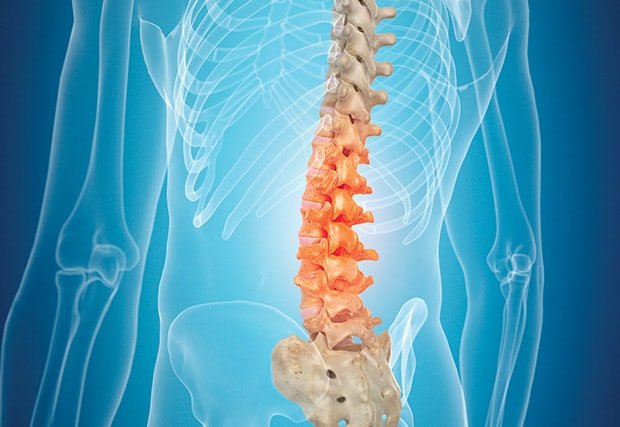About 80 percent of adults experience low back pain at some point in their lifetimes, according to the National Institute of Neurological Disorders and Stroke. The good news is that it usually lasts only a few days to a few weeks and goes away on its own.* The bad news is that it sometimes persists, and can be extremely painful and debilitating.
Did You Know?
Being older, out-of-shape or overweight can make you more susceptible to back pain. Also, smoking can accelerate arthritis, which may lead to more wear and tear on your back and contribute to back problems, says Dr. Mason Andrews. Quitting smoking and adopting healthy habits are two important ways to protect your back - and feel better at the same time.
So, what should you do if you suddenly find yourself suffering with an aching back?
For at-home treatment, acetaminophen, aspirin or ibuprofen can help, according to the National Institutes of Health. Hot packs to alleviate muscle spasms and cold packs to reduce swelling can also offer relief.
The Centers for Disease Control and Prevention (CDC) recommends you see a doctor if you have numbness or tingling, if your pain is severe and doesn’t improve with medication and rest, or if you have pain after a fall or an injury. Also, the CDC notes that the following symptoms should be evaluated by a doctor and could signal a serious problem: trouble urinating; weakness, pain, or numbness in your legs; fever; or unintentional weight loss.
The vast majority of patients who seek medical treatment for back pain are not treated with surgery, notes Neurosurgeon Mason Andrews, MD.
“When a patient comes to me with back pain, my job is to sort out where the pain is coming from,” he says. That can provide important information about the problem and the best treatment options.
So when might surgery be considered? Patients who have leg pain caused by a pinched nerve in the back often do very well with surgery, Dr. Andrews notes. Similarly, patients who have arm pain associated with pain in their neck may be good surgical candidates. Treatment for neck problems may entail cervical disc anthroplasty, which involves replacing a damaged disc in the cervical section of the spine with an artificial disc. For patients with more degenerative disc disease, a fusion procedure – which involves immobilizing segments of the spine to relieve pain – may be recommended.
Other conditions where surgery may be recommended include: herniated disc; spinal stenosis (narrowing of the spinal canal); slippage of the bones in the spine (spondylolisthesis); and pain in the sacroiliac joint (SI) joint, where the back joins the hips.
Also, a surgical procedure called kyphoplasty is offered at St. Mary’s for spinal fractures commonly experienced by patients with osteoporosis.
“Even if a patient is a candidate for surgery, we first try to maximize conservative, nonsurgical options,” Dr. Andrews says. These may include injections, physical therapy, anti-inflammatory medications and lumbar ablation, which uses radiofrequency waves to provide relief.
If surgery is needed, minimally invasive options can offer faster recoveries, less blood loss and less pain around surgery, Dr. Andrews notes. “I have a very long discussion with my patients and discuss the treatment options and what to expect,” he says. “That distinguishes the care here. There’s more of a personal feel.”
To find a doctor who is affiliated with the St. Mary's Neuroscience and Spine program, contact our free physician referral service at 580-249-3741.
*National Institute of Neurological Disorders and Stroke
Individual results may vary. There are risks associated with any surgical procedure. Talk with your doctor about these risks to find out if minimally invasive surgery is right for you.

